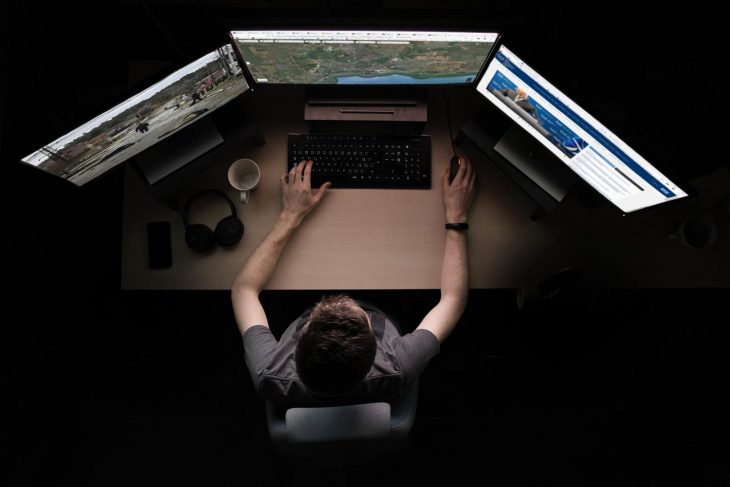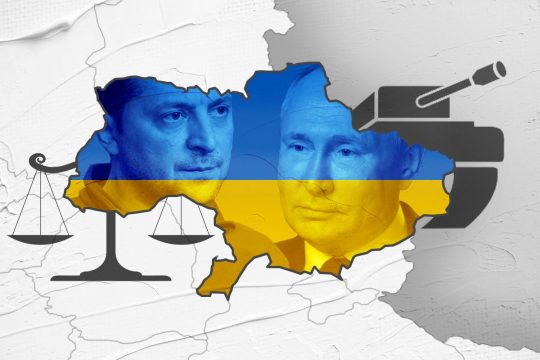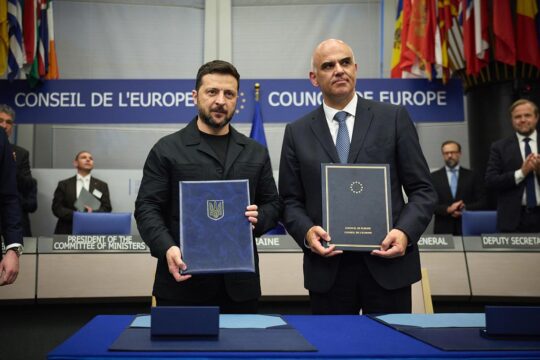The International Criminal Court (ICC) is far from alone in investigating alleged war crimes in Ukraine. A number of investigative bodies in Europe and beyond, including more than a dozen national prosecutors, have set up evidence gathering units. While testimonies from victims and witnesses including Ukrainian refugees remain central, they know digital information is important too. In Ukraine more than ever, citizens and increasingly expert NGOs are forcing them to take account of valuable information collected in "open source".
“What you'll find in a conflict is that people will take images and photos of the events that happened around them,” says Nick Waters of Bellingcat, a leading independent collective of researchers and citizen journalists using open source investigative techniques. “You know, if their village gets bombed, they want to tell the world about that. They want to say look, this was a restaurant where there were lots of women and children eating. Here's the video showing their bodies that proves it. I've seen that in Syria, in Yemen and now in Europe [with Ukraine].”
700,000 “records of information” since February
Bellingcat has partnered with the NGO Global Legal Action Network (GLAN) on a “Justice and Accountability” evidence-gathering project for Ukraine. Archiving being a nerve of the digital war, “the open source content gathered during Bellingcat’s investigations will be preserved by Mnemonic, an independent third-party organisation maintaining an archive of digital content from Ukraine, as it has done for Syria, Yemen and Sudan,” according to GLAN’s website.
Hadi al Khatib, director of Mnemonic, says the amount of publicly available online information related to conflicts is ever-growing. “Every country has certain platforms that they are using,” he told Justice Info. “For example, in Syria, YouTube and Facebook were mostly used for this kind of publication, but in Ukraine it’s Tik Tok and Telegram. So we see it more and more used, especially right now in Ukraine. Since February, we’ve archived around 700,000 records of information [on Ukraine]. We haven’t seen that much information before.”
“Information that anyone can access”
“Open sources are sources of information that anyone can access,” explains Waters of Bellingcat. “You don't have to be of a particular nationality or a particular group of people. You don't have to have a security clearance to access information. You may need to pay a little bit of money to access information, but if it gets to large amounts like several thousand pounds, I wouldn't necessarily consider that open source information. It’s information that anyone can access, almost entirely online.”
Authors of the Berkeley Protocol on Digital Open Source Investigations -- published in January this year by the University of California, Berkeley, School of Law and the UN human rights office (OCHCR) in Geneva – say the digital revolution has “led to new types and sources of information that could assist in the investigation of alleged human rights violations and serious international crimes”. These can be particularly valuable to investigators who cannot physically access crime scenes in a timely manner, which is often the case in international investigations, they say.
However, online information can be manipulated too, and its sheer mass is daunting. There is also a need for expertise in gathering, verifying and archiving it. The Berkeley authors say that so far “human rights organizations, intergovernmental bodies, investigative mechanisms and courts have at times struggled to adapt their working practices to include new digital methods of fact-finding and analysis. One of the greatest challenges that they face is dealing with the discovery and verification of relevant material within an increasing volume of online information, especially photographs and videos captured on smartphones and other mobile devices, some of which may be compromised or misattributed.”
Berkeley Protocol: a move for international standards
The Berkeley Protocol aims to provide some common international standards and guidance for conducting online research into alleged violations of international law. It also “sets out measures that online investigators can take to protect the digital, physical and psychosocial safety of themselves and others, including witnesses, victims and first responders (e.g. citizens, activists and journalists), who risk their own well-being to document human rights violations and serious breaches of international law”.
So how does Bellingcat work, for example? Waters says it is actually quite rare to find video posted by the person who took it, because it may have been reposted many times, so one of the challenges is to identify the source. Then with a video, for example, he says Bellingcat puts a lot of effort into verifying it. “After looking for this video, we place it in time and space,” he says, using mapping tools and satellite imagery. “And then we also combine that with other information and contextual knowledge. I understand how weapons systems work. So to give you an example, if there is a hand grenade exploding and a big Hollywood ball of flame, I know that's not how grenades work.”
Links with the ICC and national prosecutors
For the Ukraine project, Bellingcat’s partner Mnemonic is an NGO whose work is “about promoting human rights and accountability through the preservation and verification of open source and closed source digital information”, according to director Al Khatib. It has experience of building archives on Syria, Yemen, Sudan and also Belarus, he told Justice Info. “Closed source information” is owned by organizations and individuals such as human rights groups, media and journalists, he explains, so not publicly available. But prosecutors and courts may also need raw footage and other material that is not online.
Al Khatib says that for the Ukraine project, Mnemonic archives information from a coalition of 16 Ukrainian NGOs and Amnesty International, as well as Bellingcat. It is also establishing links with the ICC and national prosecutors to inform them of its work and understand what information they might need in future.
He says Mnemonic now plans to hire a small team of its own investigators and start organizing the Ukraine archives in such a way that it can more easily respond to requests from courts and prosecutors. These might include, for example, information on particular incidents like targeting of civilian infrastructure; “linkage evidence” (i.e. information that can link a particular suspect to a particular event); or on chains of command.
“A lot more avenues than in Syria”
Al Khatib says Mnemonic has already responded to information requests from the “International, Impartial and Independent Mechanism” (IIIM) for Syria, a UN evidence-gathering body. The issue with Syria, Al Khatib says, is “that we have had very limited accountability” apart from a few universal jurisdiction cases, notably in Germany. “And it's completely different in Ukraine right now. We have a lot more avenues than in Syria.”
He says Mnemonic has learned some lessons from Syria, however. “The first lesson that we apply directly in the context of Ukraine is archiving the materials as soon as possible, as it can get lost from social media platforms as, for example, perpetrators close their accounts or governments ask social media companies to close certain accounts or censor certain content. The second lesson is that it can be really easy to over-archive. So it's really important to make sure that we are coordinating this work between different organizations, and that different organizations contribute to archiving materials in one place.”
To him, it is critical “to engage as soon as we can with prosecution authorities”. This, he says, helped bring a landmark case in Germany which resulted in the conviction earlier this year of a Syrian official for torture.
What of the ICC and Open Source?
The question remains, for the ICC, whether this normally slow and bureaucratic jurisdiction will be up to making the most of this digital revolution. Bellingcat, founded in 2014 by British journalist and blogger Eliot Higgins, moved in 2018 to The Hague, Netherlands, which is the seat of the ICC. It has become involved with the ICC Technology Advisory Board “to help them understand how open source investigation could be applied to their work”. Bellingcat’s Waters says he thinks “there are certainly people within the ICC who are aware of the value of this kind of information. You know, the arrest warrant issued for Mr. Al-Werfalli [Libya] in 2017 was based entirely on open source information. The ICC is certainly aware of the use of this information, and has used it in a couple of cases.”
Responding to questions from Justice Info, the media section for the ICC’s Office of the Prosecutor (OTP) declined to give figures about the data collected via its online portal, opened after the start of the war in Ukraine. “The OTP does not comment on operational matters with respect to ongoing investigations and as such is not able to provide comments on the amount or content of submissions received. We will continue to strengthen channels through which all actors may engage in our investigative activity,” it replied, adding that the Prosecutor has noted his office’s intention “to introduce new advanced technological tools in order to enrich, filter and analyse such material. This will include the introduction of artificial intelligence and machine learning tools that will significantly enhance the ability of OTP investigators to review audio and video evidence”.
“I would hope that they have a process in place to be able to use that information [from the Ukraine portal],” says Waters. “I suspect there'll be a very large flow of information. I don't envy them having to sort through all that.”
Considering that investigative teams have some access to the ground in the case of Ukraine, “this kind of information will certainly be used alongside physical evidence and testimony as corroborating evidence,” Waters told Justice Info. “But I don't think anyone is going to get sent to prison based entirely on open source information”.







